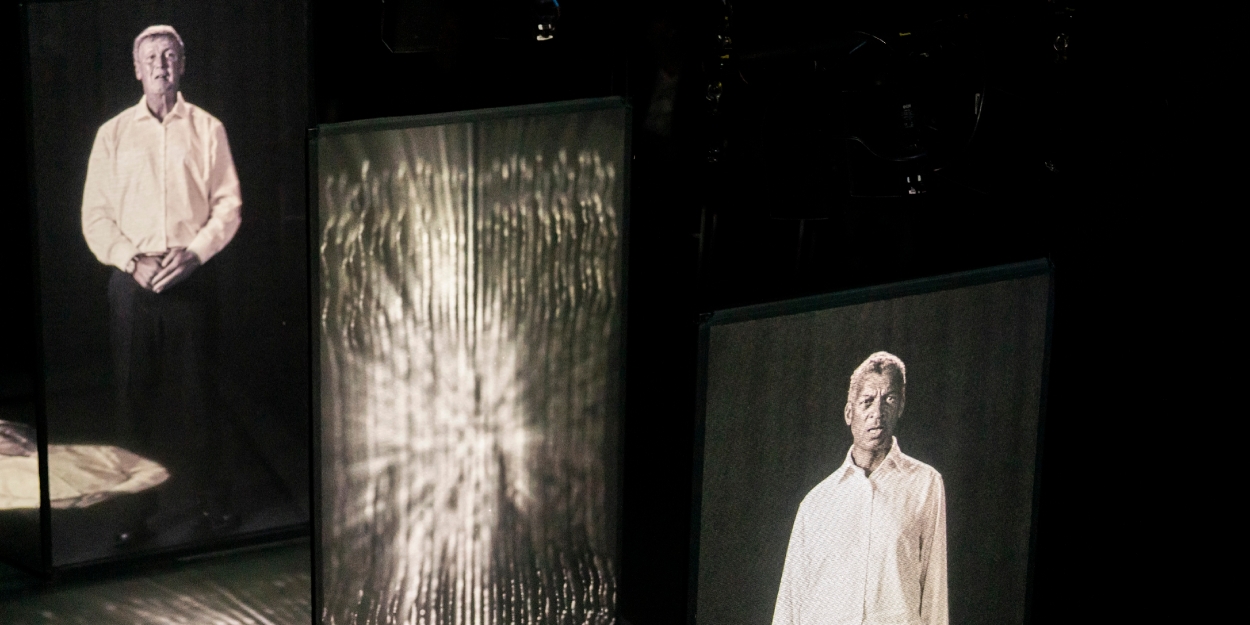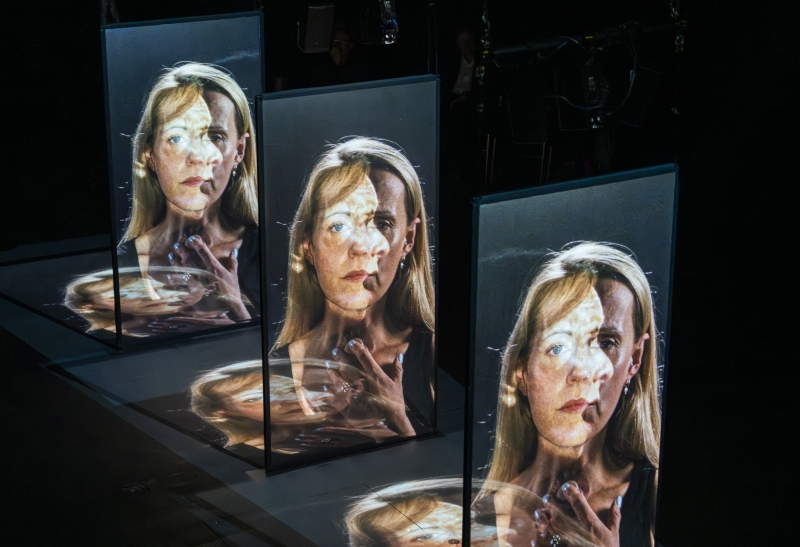Review: THE SOUND VOICE PROJECT, Royal Ballet and Opera
Extraordinary, unique, astounding 30 minutes long installation that will live forever in the hearts and minds of those who see it

 You’re not much of a reviewer if you claim that a show is not amenable to description in words. But sometimes you have to give best to the churning stomach, the sense that the world has shifted on its axis, that the tears that prick your eyes are not the result of sappy sentimentality, but form the only rational response to what you have seen. Such is The Sound Voice Project.
You’re not much of a reviewer if you claim that a show is not amenable to description in words. But sometimes you have to give best to the churning stomach, the sense that the world has shifted on its axis, that the tears that prick your eyes are not the result of sappy sentimentality, but form the only rational response to what you have seen. Such is The Sound Voice Project.
We enter a sepulchral space, dark, silent, still as much a crypt as a theatre. Three gossamer thin screens, narrow and vertical, disconcertingly lifesize, stand in the middle like tombstones and we sit in a wide circle, heart rates low, already fearful that we might have left the phone on. It’s the last thought we have of the outside world for 25 minutes.
We see a title card, the callback to a silent movie apposite, and two men appear in monochrome. Paul Jameson has lost his voice, Motor Neurone Disease claiming its brutal bounty. With him, on another screen, is a singer, Roderick Williams, whose luscious baritone is in sharpest contrast to Paul’s struggle to force the words out.
Over the four or five minutes of the aria, Paul, composed by Hannah Conway with words by Hazel Gould, we realise that the voice Paul hears (the baritone) and the voices we hear, initially jarring against each other, are the same. It is the spirit that animates the sounds that matters more than the sounds themselves, the composite man who embodies the truth, the voice not lost, but rediscovered, different and stronger. Paul is the piece’s title, because Paul is its sole subject.
Next, in I Left My Voice Behind, faces appear (Luke Hall’s devastating video design can be awarded every end of year gong right now). They are members of Shout at Cancer choir, comprising people who have undergone laryngectomies. Via technological and theatrical alchemy, they are joined by recordings of their voices made prior to the operations and an ethereal, otherworldly sound emerges, as they assert their resilience, their defiance in the face of what’s been taken and their embrace of their voices as they sound now. It’s very very hard not to applaud at the aria’s conclusion.

The title card of Tanja tells us of its subject’s diagnosis of a rare cancer that necessitated a laryngectomy just one week later. We cut to the kind of video with which we became very familiar during Covid times (which was when it was recorded). Tanja Bage is talking to her two very young children, telling them that their mummy will soon sound different, but that they’ll always have this as a keepsake of her voice.
We cut to an aria sung by Lucy Crowe and Tanja, in which the brave face gives way to a mother’s sense of loss, a bargaining with the gods imploring them to take anything from her physical form, but leave her voice to call and comfort her children. The contrast between the control of Lucy and the limits of Tanja is initially disconcerting, disheartening, upsetting, but Tanja, face four years older and etched with the pain those years contained, is going to get through. She is getting through. And her children are blessed with this wondrous work of art that their mother gave so much of herself to create.

Well that’s it. Over 500 words to describe something I asserted is not describable - and it isn’t. It is memorable though, a unique distillation of medicine, art and huge emotion. I’ve never seen anything like it and I don’t expect that I ever will.
The Sound Voice Project is at the Linbury Theatre, Royal Ballet and Opera, until 20 November
Photo images: Tristram Kenton
Reader Reviews

Videos
